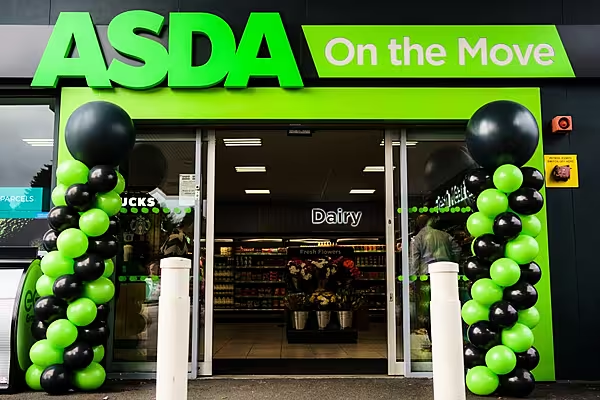Forget switching on the Christmas lights on Oxford Street and finding mince pies on the supermarket shelf.
Over the past few years, British retailers' television ads have come to signify the start of the festive season, particularly that of employee-owned department store John Lewis.
This year, both John Lewis and rival Marks & Spencer have cuddly creatures starring in their Christmas extravaganzas: at M&S it's Paddington bear, and at John Lewis it’s an imaginary monster called Moz.
Meanwhile, Aldi has brought back its squeaking carrot, Kevin, for a sequel - complete with Titanicesque scene between Kevin and his love interest Katie.
Given all the uncertainty about Brexit, it's striking that some of Britain's biggest retailers are are focusing on feel-good furry animals, which they hope are family-friendly and provide reassurance in turbulent times.
Each is also accompanied by an eco-system of products: At John Lewis there's a soft-toy monster retailing at £20 and a toy Paddington at M&S for £12. They are handy footfall drivers.
Christmas Ad Buzz
As Gadfly has argued, the spots are one of the few tools retailers have to differentiate themselves from rivals - and they're useful for generating a buzz on social media. But even the best advertising won't work unless your retail basics are right - or at least improving.
Take M&S. Its well-received "Mrs Claus" campaign last year helped to lift interest in the brand and drive store traffic. M&S reported an increase in underlying clothing and home furnishing sales, only the division's second positive quarter in six years. But chief executive Steve Rowe had also embarked on a turnaround plan for its clothing business, including refocusing on "Mrs. M&S."
This year even the best advertising may struggle to cut through the gloom. The consumer environment is darkening, whichever way you look at it.
October's UK like-for-like retail sales fell 1% year on year, the worst for seven months, according to the British Retail Consortium.
Part of that was due to warmer weather than a year ago, which dented demand for coats and knitwear. Some shoppers may also have been holding back spending in anticipation of splashing out on the iPhone X. Even so, the extent of October's weakness was a shock, and doesn't bode well for the so-called "golden quarter."
Add in the recent rise in interest rates - signalling the era of record-low borrowing costs is ending - and it's little wonder that all is not well in consumer land.
Richard Hyman, the independent retail analyst, forecasts a 1% annual decline in December non-food sales by value, a sharp slowdown from last year's rise of almost 10%.
Simon Wolfson, chief executive officer at Next Plc, says prevailing consumer conditions don't really change that much at Christmas.
If that's the case this year, it’s pretty worrying. It’s also a situation that no heart-melting menagerie is going to change.
News by Bloomberg, edited by ESM. Click subscribe to sign up to ESM: The European Supermarket Magazine.














